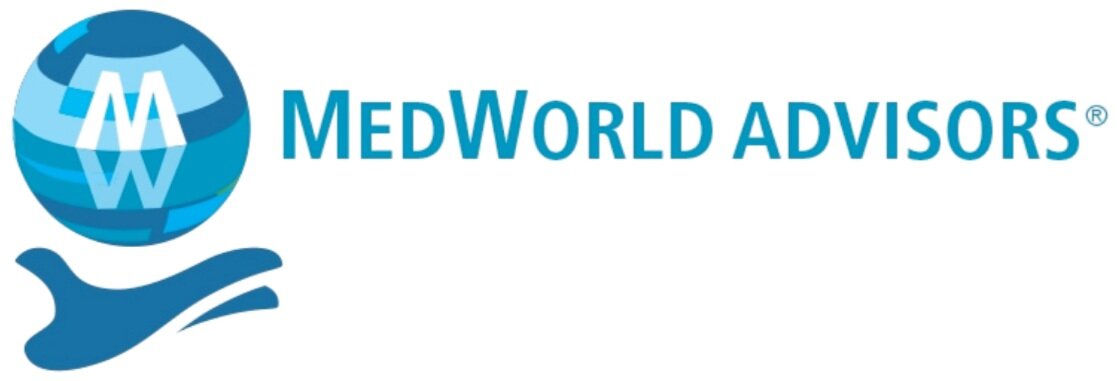How to Use Supply Chain Challenges to Win New Business
Given the scramble to address supply chain challenges, this year might be an ideal time for medtech firms to re-evaluate ways to generate new business.
Many medtech companies (especially contract manufacturers) have industry heavyweights like Medtronic, J&J, Stryker, GE Healthcare, Boston Scientific Corp., and Baxter as their customer. While these clients can be excellent buyers, they sometimes can be very difficult to work with. But they definitely are worth the trouble.
Without total market share in a specific industry sector, it is likely that companies target at least one key new OEM as a customer. Given the current scramble to address supply chain challenges, this year might be an ideal time for medtech firms to re-evaluate ways to generate new business and secure future revenue.
Most organizations presumably have business growth strategies with each key customer. Even so, basic best practice dictates that management periodically review plans for gaining new business with multinational OEMs (or divisions where sales are lacking).
There are two main considerations in improving business growth with large OEMs: securing a spot on the approved vendor list (AVL) and generating more sales with existing OEM customers. The latter is usually easier to accomplish than the former.
The pandemic-induced supply chain challenges have created an opportunity for companies to employ some key tactics to win new business with prospective medical device and lifescience customers. It starts simple but gets more complicated. A possible game plan follows.
Identify All Possible Prospects for Products/Services
Upon identifying these prospects, companies should prioritize and sensibly rank them. Important issues to consider include size, the nature of the relationship, customer knowledge, sales coverage, and strategic fit.
Small and medium-sized medtech firms can spend a lot of time trying to obtain a globally recognized conglomerate as a customer. The size and scope of the business opportunity is key, however, as smaller firms might need to rethink priorities in order to pursue a large OEM customer. The potential client may be a major industry strategic but if the total available market for that prospect is relatively small, the financial rewards may not be worth the effort.
Medtech firms should regularly re-examine their existing customer relationships to determine whether they have formed strong bonds with insiders, particularly principal influencers and decision makers. It is essential that companies identify the executives at their target clients who can and cannot sanction new business relationships.
Pursuing new customers is pointless without proper knowledge of the client(s). Here’s a good gauge executives can use to determine whether they have proper customer knowledge: They should imagine conducting an elevator pitch to a board member. That fictitious pitch should be executed with confidence and encompass such matters as vital markets in which the client participates, their underlying strategies, and their roadmap for future success. Detailed knowledge about a potential customer is one of the best ways to gain their trust and win new business.
Strategic fit is closely associated with customer knowledge. While a thorough understanding of prospective clients makes smart business sense, it does not necessarily guarantee new growth prospects. It is important for medtech organizations to conduct a candid assessment of their product and/or service offerings to determine whether their business is a good fit for each potential new client. Companies can develop wonderful relationships with possible customers but not win contracts if there is no alignment between offerings and client needs.
Sales coverage is also an important consideration when chasing new business opportunities. A potential new client opportunity in China, for example, is senseless without sales coverage in that region. Sales representation in any given coverage area is essential to establishing new growth prospects.
Winning New Customers
Companies comfortable with the prioritization of their sales pipeline and nature of their customer relationship(s) should consider the tactics they will use to win new business.
One tactic companies can immediately apply is COVID-19-related. They can take advantage of the supply chain SNAFUs caused by the pandemic and leverage their sales pipeline to discover the most urgent needs among potential clients. It’s amazing how a supply chain crisis can mobilize resources at an industry giant. Winning an AVL slot may now take 12 weeks (or less) instead of 12 months (or more, pre-COVID-19).
Beyond the opportunistic approach, medtech firms can also employ sales methodology basics. Using the prospect prioritization established through a ranking of potential new clients (as previously outlined), organizations can make plans to tackle each key prospect. Outside of the opportunistic, companies should be sure to focus only on the number of targets manageable for their sales resources.
Developing relationships is perhaps one of the most important strategies companies can use for winning new business. From the C-suite and engineering to research and development, customer service, and marketing/sales, medtech firms must find ways to develop relationships throughout the potential client’s operations that match their knowledge of their target’s key decision makers and influencers. Finding an “inside champion” or two is invaluable, as they can provide insights on what steps are needed to win business and they can also act as a “voice at the (prospect’s) table” when the pursuing company’s team is not in the room.
In developing relationships, companies must remember to listen. Doing so will help them develop trust with clients and gain insights for new business. Prospective customers that feel like a possible partner is listening to them are more likely to trust that partner and thus, more likely to award the organization new business. And, depending on the strength of the relationship, an influencer, inside champion, key decision maker, or other high-ranking executive may play a central role in helping companies obtain a new account.
In summary, there are three key thoughts for acquiring new business this year. First, medtech organizations should take care of their existing business, as that will give them the necessary stability to tackle new opportunities. Next, be opportunistic and follow proven sales pipeline methodology because this can help teams get lucky. However, anyone who works in medtech knows luck is really just preparation meeting opportunity. So be lucky.
And last but not least, help prospective customers win. Companies that develop those critical relationships by carefully listening will find a way to help their new client(s) win, and when customers win their partners triumph as well. Happy hunting.
Florence Joffroy-Black, CM&AA, is a longtime marketing and M&A expert with significant experience in the medical technology industry, including working for multi-national corporations based in the United States, Germany, and Israel. She currently is CEO at MedWorld Advisors and can be reached at florencejblack@medworldadvisors.com or at www.medworldadvisors.com.
Dave Sheppard, CM&AA, is a former medical technology Fortune 500 executive and is now focused on M&A as a managing director at MedWorld Advisors. He can be reached at davesheppard@medworldadvisors.com.
To view this article on the Medical Product Outsourcing website, click here.

